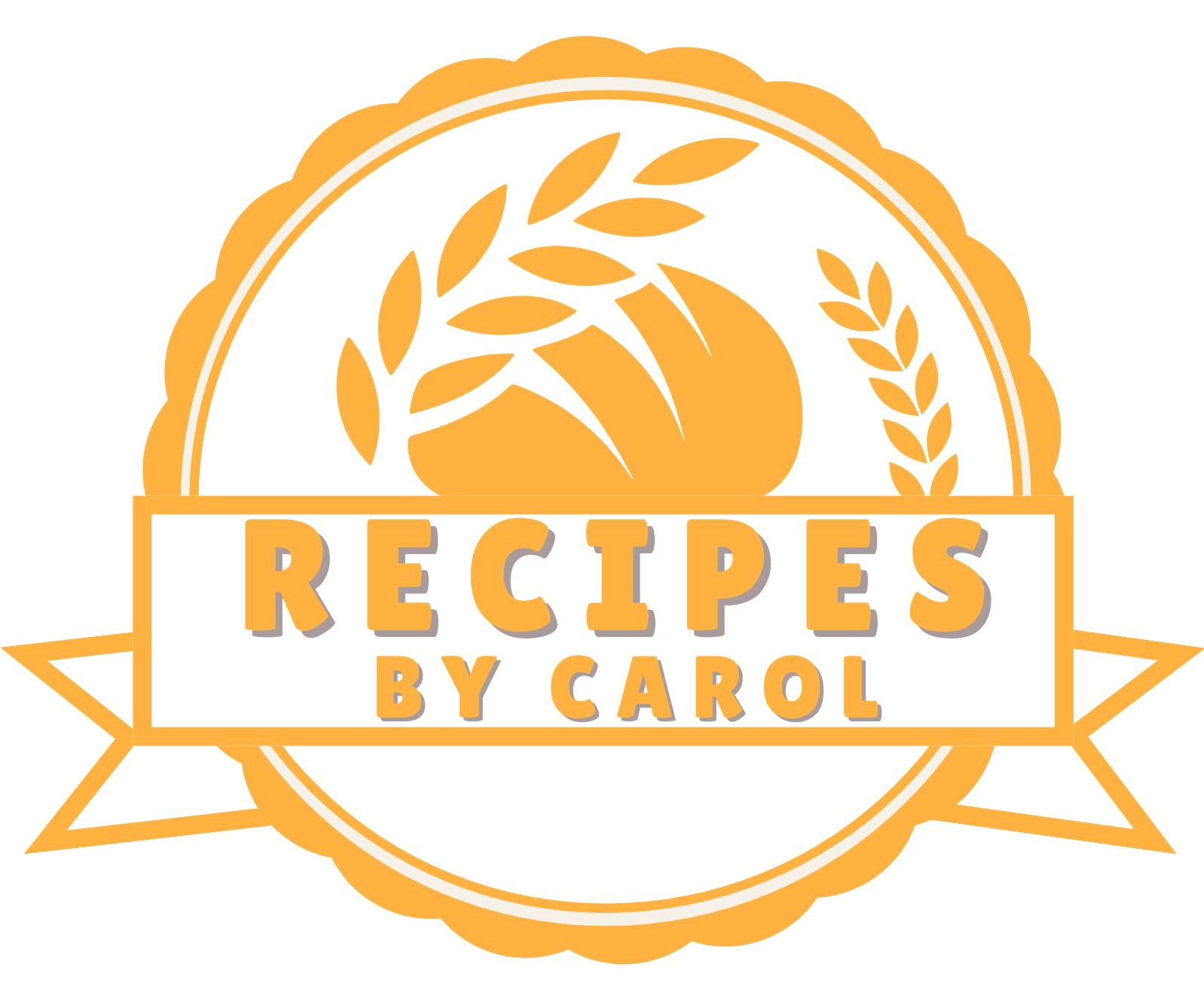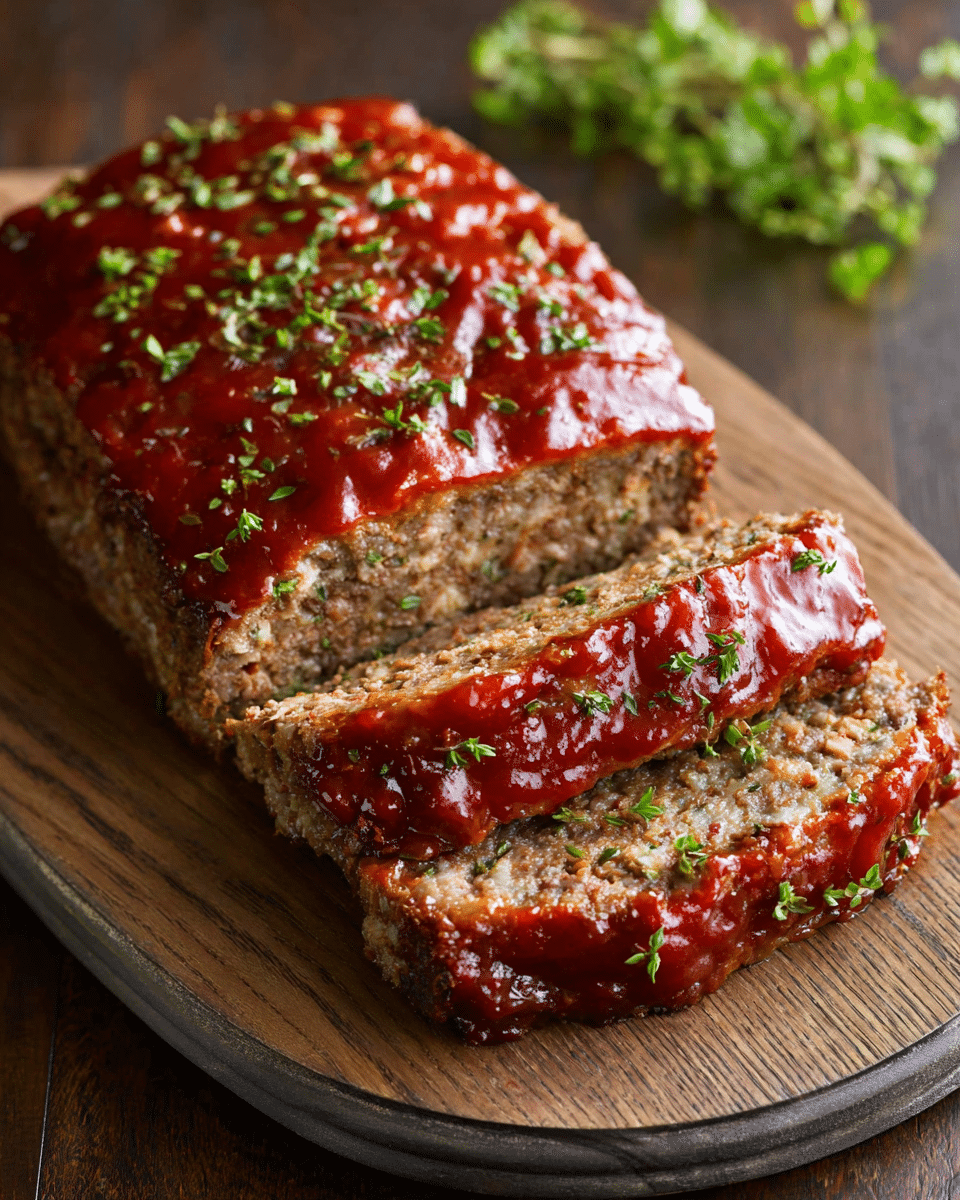The humble meatloaf is a staple of American kitchens, and this version brings back the warmth of family dinners at Grandma’s house. Tender ground beef, savory aromatics, and a sweet tangy glaze make this dish unforgettable. It’s the kind of meal that fills your kitchen with the smells of comfort and nostalgia.
Whether you’re cooking for a weeknight meal or looking to introduce the next generation to a classic, Granny’s Classic Meatloaf is a must have in your recipe box. Serve it with creamy mashed potatoes and buttery green beans for the ultimate comforting plate.
Full Recipe:
Ingredients:
-
2 lbs ground beef (80/20)
-
1 cup plain breadcrumbs
-
2 large eggs
-
1 medium onion, finely chopped
-
3 cloves garlic, minced
-
1/2 cup whole milk
-
1/4 cup ketchup
-
2 tbsp Worcestershire sauce
-
1 tsp salt
-
1/2 tsp black pepper
-
1/2 tsp dried thyme
For the glaze:
-
1/3 cup ketchup
-
2 tbsp brown sugar
-
1 tbsp Dijon mustard
Directions:
-
Preheat oven to 350°F (175°C). Lightly grease a loaf pan or line with parchment paper.
-
In a large mixing bowl, combine ground beef, breadcrumbs, eggs, onion, garlic, milk, ketchup, Worcestershire sauce, salt, pepper, and thyme.
-
Mix gently with your hands or a spatula until just combined—do not overmix.
-
Transfer the meat mixture into the prepared loaf pan and shape it into a loaf.
-
In a small bowl, mix together ketchup, brown sugar, and Dijon mustard. Spread the glaze evenly over the top of the meatloaf.
-
Bake for 55-65 minutes, or until the internal temperature reaches 160°F (70°C).
-
Let the meatloaf rest for 10 minutes before slicing. Serve with mashed potatoes and green beans for a comforting classic dinner.
Prep Time: 15 minutes | Cooking Time: 60 minutes | Total Time: 1 hour 15 minutes
Kcal: 320 kcal | Servings: 6 servings
Granny’s Classic Meatloaf: The Ultimate Comfort Food Reinvented
There’s something truly heartwarming about a slice of freshly baked meatloaf served hot with a generous helping of creamy mashed potatoes and crisp green beans. It’s the kind of meal that doesn’t just fill your stomach it fills your soul. Among the vast collection of family recipes passed down through generations, Granny’s Classic Meatloaf holds a special place in countless kitchens across America. It’s a dish rooted in tradition, built on simplicity, and perfected by love.
What sets Granny’s recipe apart isn’t just the ingredients, but the way they come together to form something far greater than the sum of its parts. Every bite is a comforting nod to heritage, reminding us of Sunday dinners, weeknight meals around the family table, and that unmistakable smell wafting from the kitchen after a long day.
A Brief History of Meatloaf in America
While meatloaf might feel uniquely American, its roots go back centuries to Europe, where variations of minced meat and fillers were popular across Germany, Scandinavia, and Italy. The concept was simple: blend ground meat with bread, grains, or vegetables to stretch the meal further especially during tough economic times. It was an early exercise in kitchen economy, and it worked.
In the U.S., meatloaf gained mainstream popularity during the Great Depression. Affordable and versatile, it allowed families to make the most of what they had, often using inexpensive cuts of meat and pantry staples. With the introduction of meat grinders in home kitchens in the early 20th century, recipes for meatloaf began appearing in cookbooks across the country.
By the 1950s, it was a centerpiece of the American dinner table. Variations abounded some with hard-boiled eggs inside, others wrapped in bacon or topped with a tomato-based glaze. But one version consistently stood the test of time: the one Grandma made.
Why Granny’s Version Stands Out
Granny’s Classic Meatloaf isn’t fancy. It doesn’t call for exotic spices or avant-garde presentation. Instead, it embraces the fundamentals balanced seasoning, the right meat-to-binder ratio, and a sweet-tangy glaze that caramelizes perfectly in the oven.
The key to its success lies in its texture and flavor harmony. The breadcrumbs and milk create a tender loaf that holds its shape without being dry. The combination of garlic, onion, and Worcestershire sauce adds deep umami flavor. And the glaze slightly sweet, slightly sharp rounds it all out with that nostalgic finish everyone loves.
It’s food that’s been cooked not for aesthetics, but for people. It’s dependable, hearty, and absolutely satisfying.
The Role of Tradition and Memory in Food
Recipes like Granny’s meatloaf often carry with them emotional weight. They’re more than meals they’re stories. Maybe you remember watching her mix the ingredients in a big ceramic bowl, or sneaking tastes of the glaze before it went on top. Maybe it was the first “real” dish you ever learned to make. For many, it’s the dish requested on birthdays or when returning home after a long time away.
Food anthropologists and culinary historians often emphasize the power of dishes like this in forming personal and collective identity. We may forget specific events, but we remember how it felt to eat Granny’s meatloaf with our family. We remember the laughter, the warmth, and the comfort of being cared for through a lovingly prepared meal.
Modern Twists and Variations
While the classic version remains untouched in many homes, modern cooks have started adding their own spins to the meatloaf template. Some incorporate ground pork or veal for a more complex flavor. Others fold in grated carrots or zucchini for a nutritional boost.
For those looking to avoid red meat, ground turkey or chicken can serve as leaner alternatives, though they require slightly more moisture (extra milk or broth) to prevent dryness.
There’s even a rise in plant-based meatloaf made with lentils, chickpeas, or meat alternatives like Beyond Meat or Impossible Beef, allowing vegetarians and vegans to enjoy a nostalgic slice of comfort food.
That said, nothing replaces the original when it comes to capturing the full sensory memory of “Granny’s kitchen.”
Serving Suggestions
To truly honor this dish, serve it with sides that complement its warm, hearty profile. Mashed potatoes are the traditional pairing, and with good reason they balance the savory density of the meatloaf with their soft creaminess. Add in roasted or buttered green beans, steamed carrots, or a crisp garden salad for some color and crunch.
For a more contemporary meal, try serving it with garlic roasted cauliflower, sautéed kale with lemon, or a wild rice pilaf. Leftovers make fantastic meatloaf sandwiches the next day just slice, reheat, and slide into a toasted bun with a little extra glaze or a swipe of mayo.
Common Pitfalls and How to Avoid Them
Even such a classic recipe can be tricky without a few ground rules:
-
Overmixing the meat: This can lead to a tough loaf. Mix until just combined.
-
Skipping the resting period: Letting the meatloaf sit for 10 minutes after baking allows the juices to redistribute.
-
Wrong pan size: Using a pan that’s too large or small can affect baking time and shape. Standard loaf pans or free-form on a sheet pan work best.
-
Too much or too little binder: The breadcrumbs and milk must be balanced to ensure the meatloaf doesn’t crumble or become gummy.
Why It Still Matters Today
In a fast-paced world filled with meal kits, fast food, and takeout apps, Granny’s meatloaf offers something different something grounding. It’s a ritual. A meal you prepare with your hands, bake slowly, and enjoy together.
It teaches cooking basics: seasoning, binding, baking, and balance. It’s budget-friendly and beginner friendly. And most importantly, it connects us to where we came from.
As we grow more interested in “slow food,” heritage cooking, and recipes with real stories, classic dishes like meatloaf are experiencing a revival. Food bloggers, TikTok creators, and cookbook authors are rediscovering their grandparents’ recipes and giving them new life. And audiences are responding.
Conclusion:
Granny’s Classic Meatloaf is more than a meal it’s a legacy. It represents a tradition of care, of practical kitchen wisdom, and of family-centered living. While the ingredients may be humble, the outcome is anything but. It delivers nourishment not just to the body, but to the heart.
When you make this meatloaf, you’re not just making dinner. You’re recreating a moment in time. You’re honoring someone who probably cooked without recipes, who measured love in pinches and handfuls, and who knew that a good meal had the power to heal, to gather, and to remind us that we belong.
So go ahead bake the loaf, pour the glaze, slice it thick, and pass it around. And when you take that first bite, you’ll understand why Granny’s version is and always will be the best.






